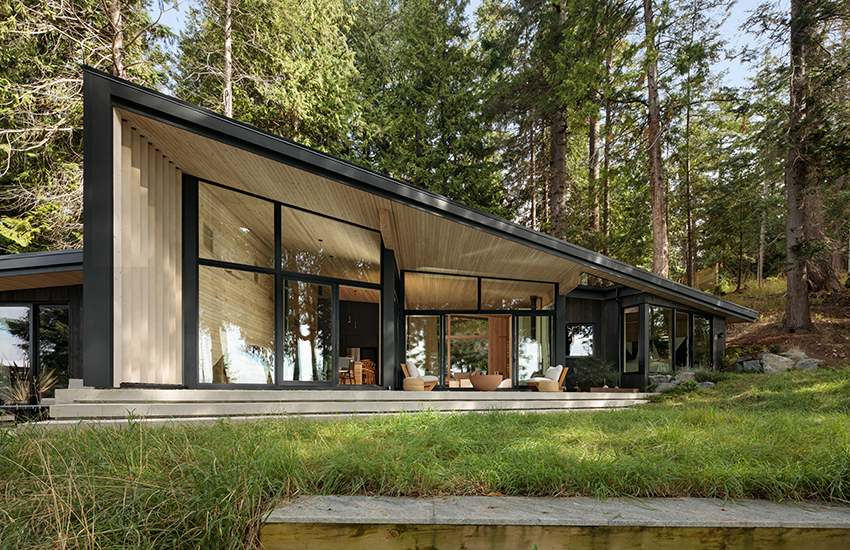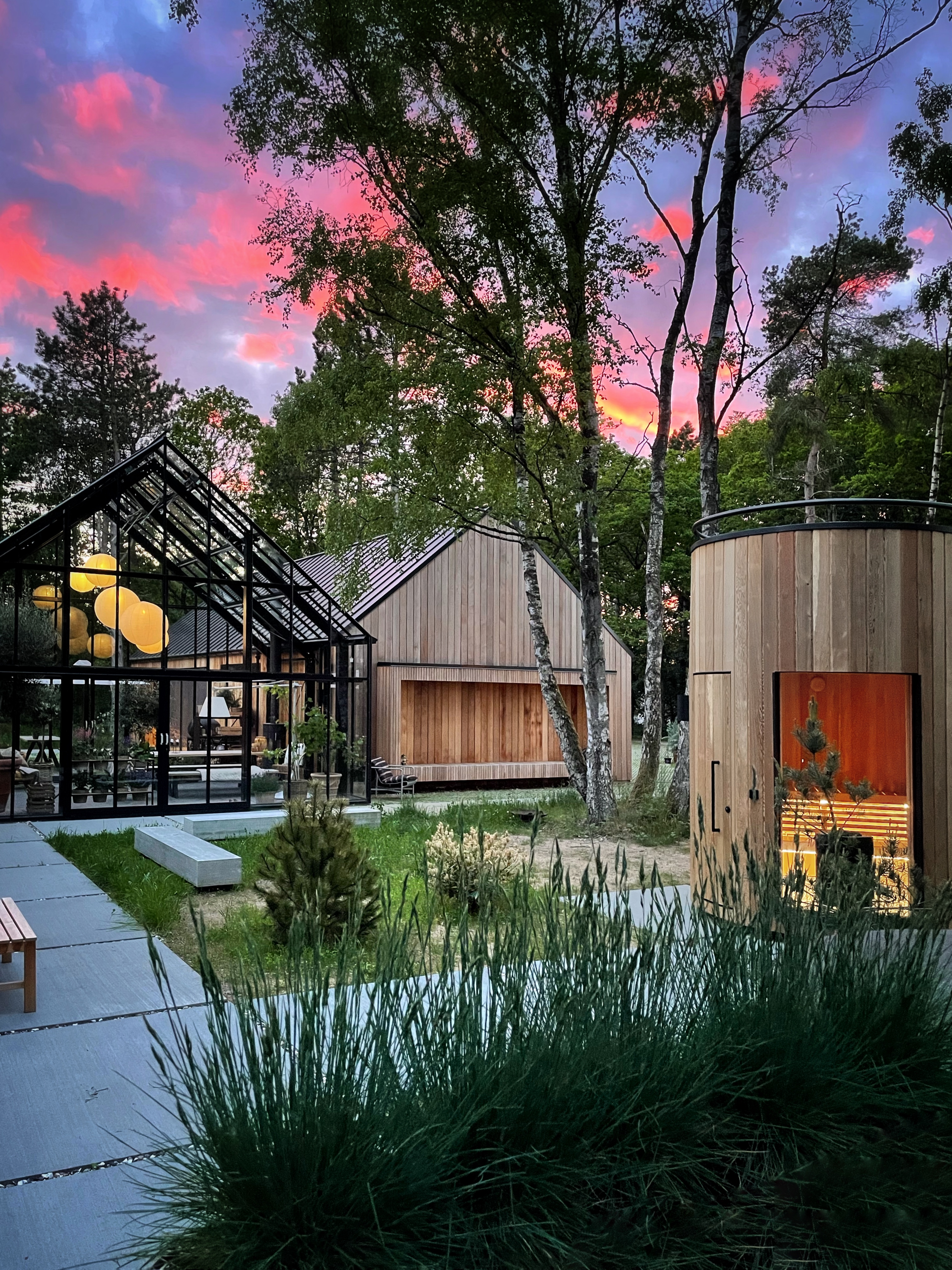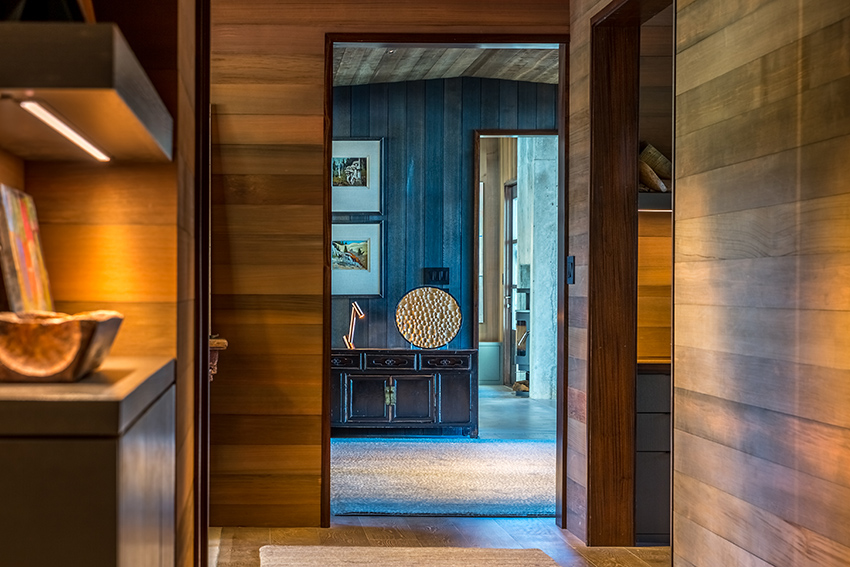Western Red Cedar and the Benefits of Biophilic Design
Learning Objectives:
- Identify the principles of biophilic design and its benefits for occupant health and well-being.
- Examine the importance of incorporating biophilic design into the built environment.
- Describe the properties of wood, specifically western red cedar, and how it elicits biophilic responses in building occupants.
- Explore how designers can use wood in the built environment and case studies where western red cedar contributed to biophilic design.
Credits:
This course is approved as a Structured Course
This course can be self-reported to the AANB, as per their CE Guidelines
Approved for structured learning
Approved for Core Learning
This course can be self-reported to the NLAA
Course may qualify for Learning Hours with NWTAA
Course eligible for OAA Learning Hours
This course is approved as a core course
This course can be self-reported for Learning Units to the Architectural Institute of British Columbia
Biophilia literally means a love of life or living things and is a personality trait initially described by Erich Fromm, and later E.O. Wilson. Both agree that “biophilia has a biological basis and it is fundamental to develop harmonious relationships between humans and nature.”1 Fromm used the term biophilia to “describe the psychological orientation of being attracted to all that is alive and vital,” while Wilson used the term biophilia to “describe the traits of evolutionary adaptation that allow us to develop a mental link with the living world and nature.”2
Edward O. Wilson ultimately popularized the biophilia hypothesis, which suggests that humans possess an innate tendency to seek connections with nature and other forms of life, in his book, Biophilia. In 1993, Wilson and colleague Stephen R. Kellert published the collection of essays The Biophilia Hypothesis, which claims that “the human dependence on nature extends far beyond the simple issues of material and physical sustenance to encompass as well the human craving for aesthetic, intellectual, cognitive, and even spiritual meaning and satisfaction.”3

Photo courtesy of Ema Peter
Halfmoon Bay. Architect: Patrick Warren
INTRODUCTION TO BIOPHILIC DESIGN
Biophilic design is design that reconnects us to nature. Nature partially satisfies the psychological need to belong and relate, so activities that involve contact with nature have been shown to improve connectedness, well-being, and promote behavior that benefits the environment. Studies show that people tend to behave more altruistically in natural environments and have an increased sense of satisfaction with life. Conversely, disconnecting from nature has detrimental effects on both mental and physical health. Many studies observe that direct exposure to nature, even in brief increments, can offer visible psychophysiological benefits, but due to an increasingly urban lifestyle, our contact with nature has become less frequent. “Unfortunately, modern people, especially children, lack direct and frequent contact with nature and this can have negative consequences on their physical and mental health. Biophilic design, considering the evolutionary roots of this architectural approach, is an effective way of planning/designing interior and urban environments to stimulate the innate biophilia of the individual.”4
In 2007, the urban population surpassed the rural population for the first time in human history5 and the World Health Organization forecasts that 68% of the population will live in cities by 2050.6 Without intervention and careful design, people living in cities will have increasingly fewer opportunities to get in touch with nature, so it’s vitally important to create environments that stimulate biophilia as much as possible. Biophilic design can meet this need, with the goal being to create artificial environments as similar as possible to natural ones, to ensure people receive the positive effects of nature on their health and well-being.

Photo courtesy of Bruno Jakobsen, Jakob Lerche
Nordic Barn. Architect: Bruno Jakobsen Design
PHYSICAL AND MENTAL BENEFITS OF BIOPHILIC DESIGN
Biophilic design has been shown to reduce stress, which lowers blood pressure and cortisol levels while promoting feelings of comfort and restfulness. It can also improve cognitive function and creativity, which is especially important for education and office settings. In fact, a study of 2,593 schoolchildren in Barcelona, Spain researched how exposure to green space affected the cognitive development of school children between the ages of 7 and 10. “This study, based on comprehensive characterization of outdoor surrounding greenness (at home, school, and during commuting) and repeated computerized cognitive tests in schoolchildren, found an improvement in cognitive development associated with surrounding greenness, particularly with greenness at schools.”7
Nature can also regulate emotion, mood, and visual preference for a space or goods. For example, in retail and hospitality settings, visual, tactile, and olfactory cues are important and can aid in branding and consumer experience if they are connected to nature. Experiences with nature, whether real or simulated, have also been shown to improve well-being and expedite healing. In healthcare, biophilic design can lead to shorter hospital stays, fewer negative comments, and fewer strong analgesics. As you can see, exposure to nature in the built environment is vitally important for the health, well-being, and cognitive functioning of building occupants, especially as the world population continues to urbanize. Architects and designers will play a key role in facilitating this connection to the natural world through biophilic design.
BIOPHILIC QUALITY INDEX
Until recently, “green” architecture, or sustainable design, has focused on the energy performance of buildings and their impact on the environment but doesn’t consider how incorporating natural elements into building design could impact occupants. “Sustainability does not really push architects to go beyond form and scale design to encompass the well-being and quality of life of users, which should be among the most important architectural considerations today.”8 But this is changing with more recent programs such as The WELL Building Standard and The Living Building Challenge that take a more holistic view of sustainable design and its impact on occupant health and well-being. In their publication The Biophilic Quality Index: A Tool to Improve a Building from “Green” to Restorative, the authors discuss a reliable instrument they have developed that can be used to calculate to what extent a building is biophilic. They call it the Biophilic Quality Index (BQI) and posit that to achieve a balance between sustainability and biophilia, a paradigm shift from “green” to “restorative” is needed to really accomplish biophilic design. “The BQI can be used both as a guide to follow for a building-to-be and as a rating system for an existing building, where the final score (a percentage) represents the room for improvement. The BQI will help architects integrate nature in design and promote the understanding that to plan restorative environments is not only an aesthetic need but a necessity for human being’s efficient cognitive functioning.”9
GROWTH OF THE “WELLNESS REAL ESTATE” MARKET
Beyond professionals in the architectural community who have been moving toward a holistic view of sustainability and wellness in building design, consumers are increasingly aware of how their lifestyle and external environmental factors impact their health and well-being. They are seeking solutions to enhance their health and wellness and are looking directly to the real estate industry to align with these expectations. According to the Global Wellness Institute (GWI), wellness real estate is defined as “the construction of residential and commercial/institutional (i.e., office, hospitality, mixed-use/multi-family, medical, leisure, etc.) properties that incorporate intentional wellness elements in their design, materials, buildings, amenities, services, and/or programming.” Wellness real estate now represents a key industry within the global economy and was a $275 billion industry in 2020.10
Boston University’s School of Hospitality Administration notes, “It can be anticipated that such developments will likely become the norm, progressively transforming residential neighborhoods and cities. Such a transformation would benefit populations and the environment and result in higher profitability and returns for all stakeholders. Although wellness real estate represents a small portion of the real estate industry, the benefits it brings are expected to generate a rising interest from stakeholders globally.”11
Important design details for wellness real estate in individual facilities are orientation and form; materials; and biophilic design.12

Photo courtesy of Anna Spencer
Kayak Point. Architect: Christopher Wright Architecture
Orientation and Form
This entails positioning and designing the form of the buildings to maximize the use of environmental resources (e.g., light, air, views, cross-ventilation) to create comfort and optimize energy consumption.
Materials
It’s important to prioritize natural, durable, and functional materials requiring minimal maintenance to create a sense of warmth with surfaces that are soft to the touch. To limit the carbon footprint, these materials should be locally sourced. Such materials include natural stones, wood, and textured tiles and should naturally blend with the shapes and tones of the local landscape.
Wood is one such material that is natural, durable, and functional and requires minimal maintenance, particularly when used in interiors. Bill Browning of Terrapin Brightgreen, when interviewed in the Biophilic Solutions podcast, notes that wood has the ability to patina with age versus wear down, necessitating less frequent replacement. This is important for project types such as hospitality, which typically replace furnishings on a seven-year rotation.


















